Microsoft’s Xbox might be the newest player in console gaming’s “big three,” but the brand has managed to stand out with unique hardware and services from the very beginning. Two decades in, Xbox is already looking well beyond the console age and into the future of gaming with cloud-based gaming infrastructure.
So how exactly did Xbox get here and what lies ahead? We put together this comprehensive guide to the brand, covering everything from console history to first-party studio acquisitions and more. Whether you’re a long-time fan or a recent Xbox Series X or Series S buyer, here’s everything you need to know about Xbox!
Xbox brand at a glance

Xbox as a brand was first introduced toward the end of 2001 with the release of the original Xbox console. The name comes from Microsoft’s DirectX graphics API, which the company used for the ubiquitous Windows PC platform. Indeed, the first Xbox console was essentially a modified Windows PC, and it included hardware components like a broadband modem and an HDD that weren’t traditionally found on consoles at the time.
While Xbox was initially conceived as a living room entertainment centerpiece, the brand has since expanded well beyond that. Xbox now goes beyond home consoles and onto PCs and even mobile devices via the cloud. Growing services like Xbox Network (formerly Xbox Live) and Xbox Game Pass also show huge potential for the future.
The Xbox brand now goes beyond consoles and onto PCs and even mobile devices.
A big part of the brand’s success is Xbox Game Studios (formerly Microsoft Studios), which publishes a host of first-party games from more than twenty studios around the globe. Those include the studios behind smash-hit franchises like Gears of War, Halo, Age of Empires, and even the most popular game of all time, Minecraft. In 2020, the company also finalized its purchase of ZeniMax, bringing Doom, The Elder Scrolls, Wolfenstein, and others under its banner, as well.
But it hasn’t always been a complete success story for Xbox. The Xbox 360 suffered from the infamous Red Ring of Death (RRoD) problem that saw nearly a quarter of all shipped consoles fail, and the Kinect peripheral never managed to catch on, despite Microsoft’s efforts. Its consoles are also in the perennial third place behind PlayStation and Nintendo.
That said, Xbox is in a good position coming into its latest round of consoles, the Xbox Series X and Series S. Although initial sales have lagged behind the PlayStation 5, the two-tiered console approach paired with subscription services like Xbox Game Pass could see Xbox take the console crown for the first time in history.
Xbox consoles
Although Xbox has expanded to software and services in recent years, the heart of the brand is still home consoles. At this point, we’ve had two decades of releases, comprising four separate generations and several more inter-generational upgrades to keep pushing graphical limits as far as possible.
If you really want to learn more about the history of Xbox consoles, we have a full guide for that linked below. For the brief version, keep reading.
Read also: The history of Xbox
Xbox
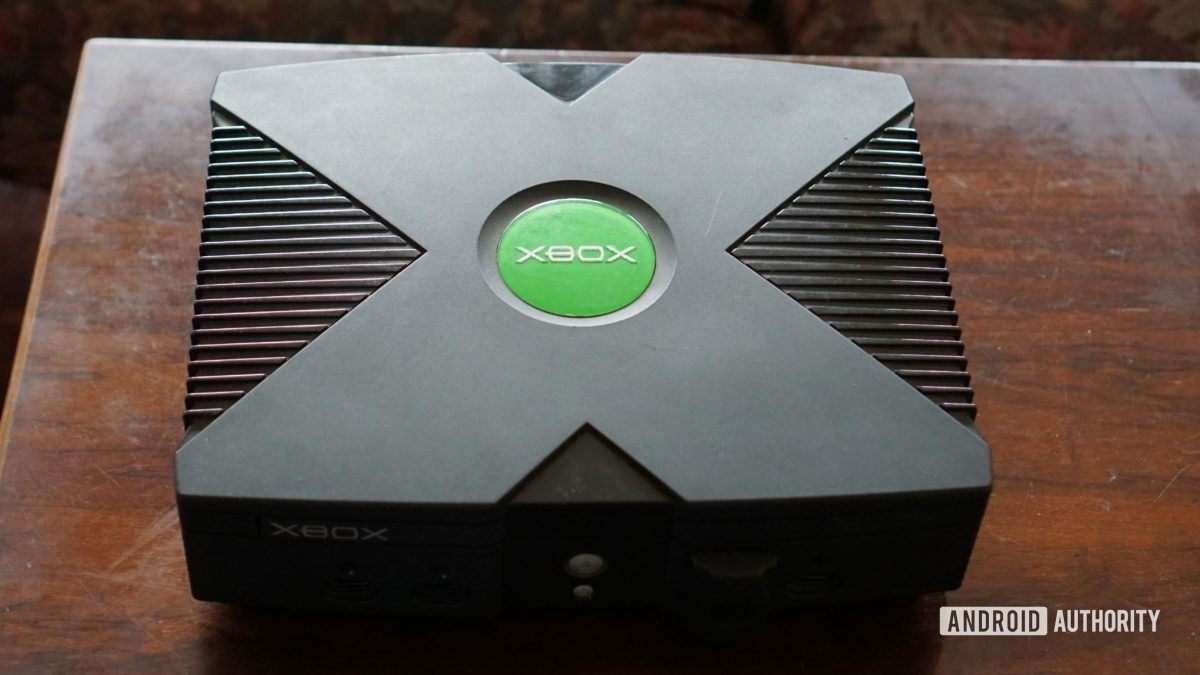
Microsoft’s first Xbox console came out back in 2001, competing with the Sony PlayStation 2, Nintendo Gamecube, and to a lesser extent, the Sega Dreamcast. Considering the PS2 is the best-selling console of all time, that’s some fierce competition.
Even so, the Xbox managed to win over some fans. It didn’t make much headway in Japan (where all three other consoles originated), but it fared much better in Europe and the United States.
Much of that success is due to Xbox Live, which offered the best online gaming experience of any console at the time. Paired with an integrated broadband model and the flagship game Halo 2, the original Xbox truly set the stage for later expansion of online gaming as a whole.
Xbox 360

Just a few years after the release of the Xbox, Microsoft released the Xbox 360 in 2005. This gave it a full year’s headstart over its eighth-generation peers, the PlayStation 3 and Nintendo Wii. Combined with the existing Xbox Live fanbase and an attractive price point, the Xbox 360 forged an early lead.
The Xbox 360 shipped with two separate configurations: a $299 Core model without a hard drive and a $399 Pro model with a 20GB hard drive. It also came with a wireless controller in the box, largely bringing an end to the days of wired controllers.
Read also: How to use an Xbox controller on Android devices
Although the console remains Microsoft’s most successful to date, it wasn’t without its problems. The Red Ring of Death (RRoD) problem plagued early consoles for years, and prompted the company to set aside $1 billion for repairs and replacements.
This problem was solved with later revisions, which for the first time included a few inter-generational upgrades. The first was the Xbox 360 Elite in 2007, followed by the Xbox 360 Slim in 2010, and finally the Xbox 360 E in 2013. That said, the difference between these consoles wasn’t as drastic as it would be in later Xbox consoles.
Xbox One
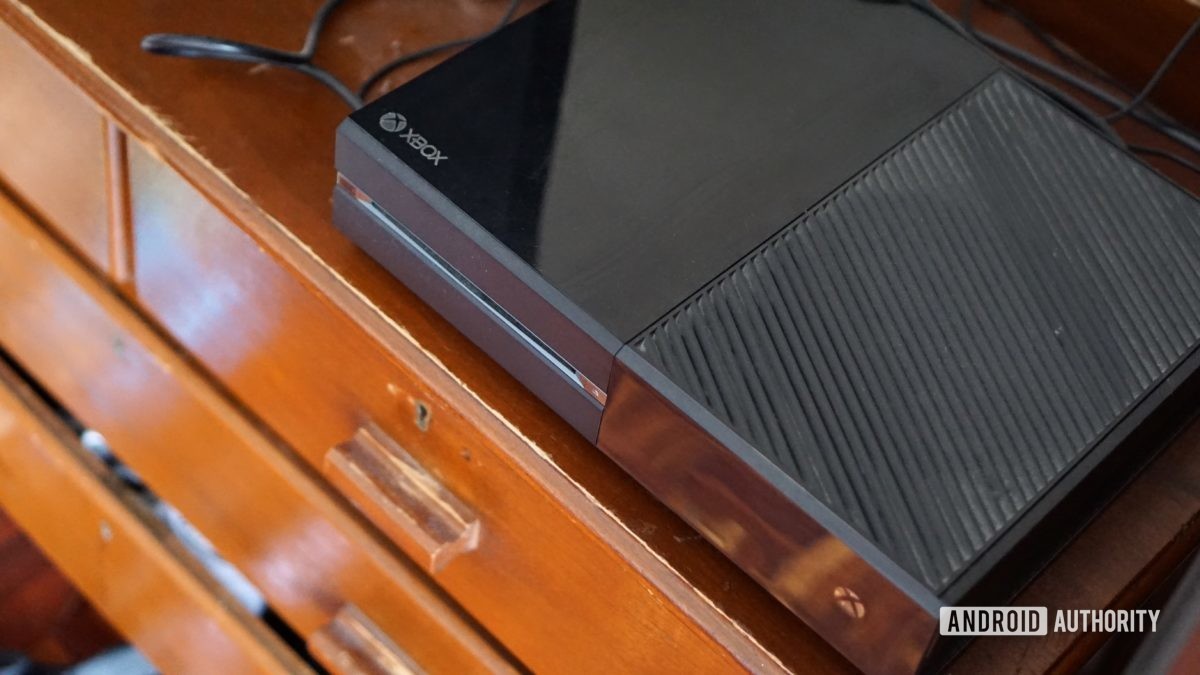
Microsoft first revealed the Xbox One in 2013, and with it came a slight shift in business model. Rather than focusing solely on gaming, the company wanted your Xbox to become the centerpiece of your living room. For example, it featured an HDMI-in port to plug in your cable box, and enhanced support for streaming services.
The console itself featured some powerful internals, but performance still lagged a bit behind its rival, the PlayStation 3. It would later leapfrog Sony’s latest with the Xbox One X in 2017, which remained the most powerful console of its generation, and the only one to consistently deliver 4K gaming.
Related: The best Xbox One games you can buy
This generation of Xbox consoles also saw greatly expanded backwards compatibility. This started in 2015 with Xbox 360 games, followed by original Xbox games in 2017. That meant all three generations of Xbox games could be played on a single console, while the PS3 didn’t even support PS2 games.
Another important addition was Xbox Game Pass. This allowed access to a library of Xbox and PC games for a monthly subscription fee. Game Pass proved to be incredibly popular, and later became one of the keystones of Xbox strategy going into the latest generation of consoles.
Xbox Series X and Series S
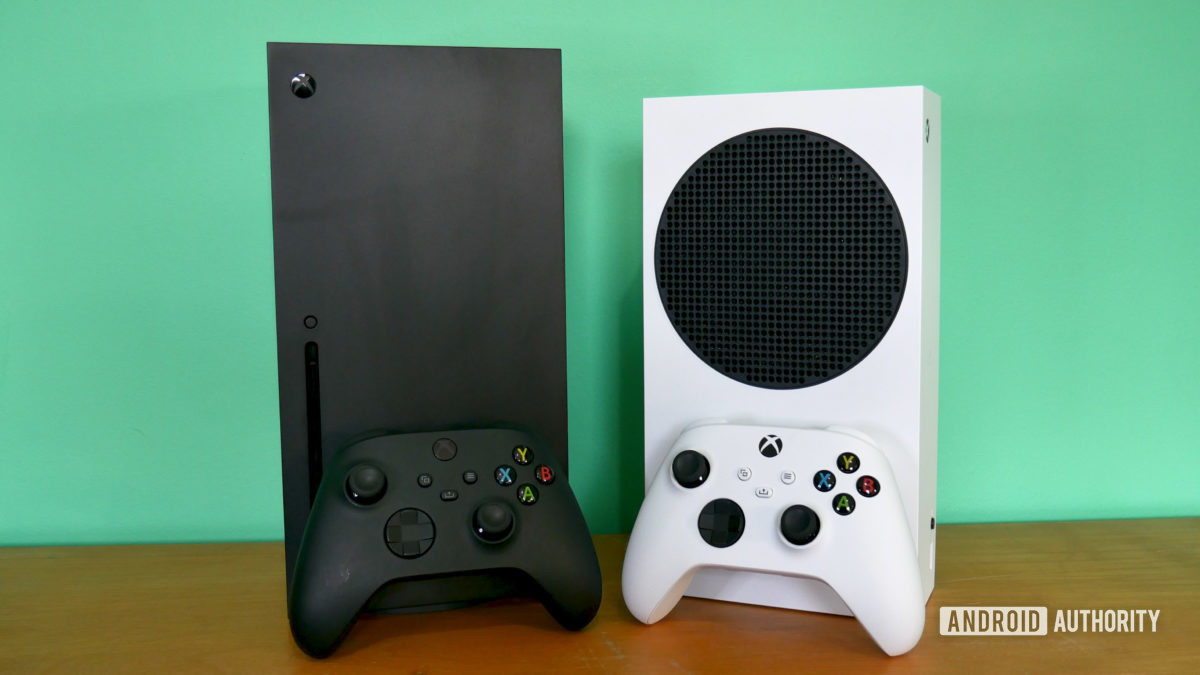
Xbox was at a low point when coming into its fourth generation of consoles, but it really brought the heat with two separate console designs to suit all budgets in 2020. The more expensive Xbox Series X provides truly next-gen performance, while the all-digital Xbox Series S allows access to the same games at a lower resolution — and a much lower price point.
Without getting too deep into technical specifications, the Series X is built to target consistent 4K/60fps, with support for up to 8K resolution and 120fps. The less powerful Series S, on the other hand, targets 1440p/60fps, with support for 4K upscaling and 120fps.
Further reading: Xbox Series X vs Series S
In terms of games, the consoles didn’t have much of a launch lineup to speak of. This was mostly due to COVID-19 delays, but even the keystone title Halo: Infinite has been delayed to the second half of 2021.
That said, the real strengths of this generation are twofold: backwards compatibility and Xbox Game Pass. Both consoles are compatible with games from all four generations of Xbox consoles, and Xbox Game Pass provides affordable access to more than 100 titles.
Although supply problems plagued both next-gen console releases, early sales have favored the PlayStation 5. It’s still early innings though, and with Microsoft ramping up acquisitions to beef up its service offerings like Game Pass and Xbox Cloud Gaming, console sales may no longer be the most important indicator of success.
Xbox services
As mentioned above, Xbox had a special focus on service since its very early days with Xbox Live. Today, those services expand beyond just the console space and form a big part of Xbox’s strategy to build out its digital ecosystem.
To give you an idea of what the company has to offer, here’s a quick roundup of all Xbox services currently available. Be sure to check out our dedicated guides to learn more about each service.
Xbox Network (formerly Xbox Live)

If there’s one service that’s synonymous with Xbox, it’s Xbox Live. Although it was renamed to Xbox Network in 2021, online play via Xbox Live has been a key feature of the consoles since the very first Xbox.
Xbox Network encompasses not just multiplayer games, but also your entire online presence through a custom “gamertag” and avatar. It also keeps track of achievements via a “gamerscore.” This enabled a whole new way to play games, where game-specific challenges can be rewarded with achievement points.
Today, Xbox Live Gold is the gold standard (no pun intended) when it comes to online gaming. For $9.99 a month (or $59.99 a year), it unlocks online gaming, game discounts, and even two free games to keep every month.
Even non-paying customers can access many parts of Xbox Network. Although online multiplayer for most games is locked behind a subscription, Xbox recently changed its policies to allow free-to-play games like Fortnite to be played online without a subscription. Other elements like achievements are also free for all users.
Xbox Cloud Gaming

Looking to the future, Xbox has recently launched a cloud gaming service called Xbox Cloud Gaming. Known as Project xCloud while in beta, it offers access to a library of Xbox games streamed directly from the cloud to your mobile device.
More: What is Xbox Cloud Gaming?
Similar to competitors like Google Stadia and Amazon Luna, it utilizes powerful hardware in the cloud and high-speed connections to deliver near-local performance. There is some input latency (or a lot, if your connection isn’t stable), but for many games it’s hardly noticeable.
Currently, Xbox Cloud Gaming works on Android devices via the Xbox Game Pass app, and on Windows, macOS, and iOS devices via a browser. Many games now feature touchscreen support for controls, although other peripherals like the Razer Kishi Xbox Edition make the experience even better.
At the moment, Xbox Cloud Gaming is only available for Xbox Game Pass Ultimate subscribers — there is no standalone subscription. However, that will likely change later this year as Microsoft launches its planned Xbox app on smart TVs and a dedicated Xbox streaming dongle.
Xbox Game Pass
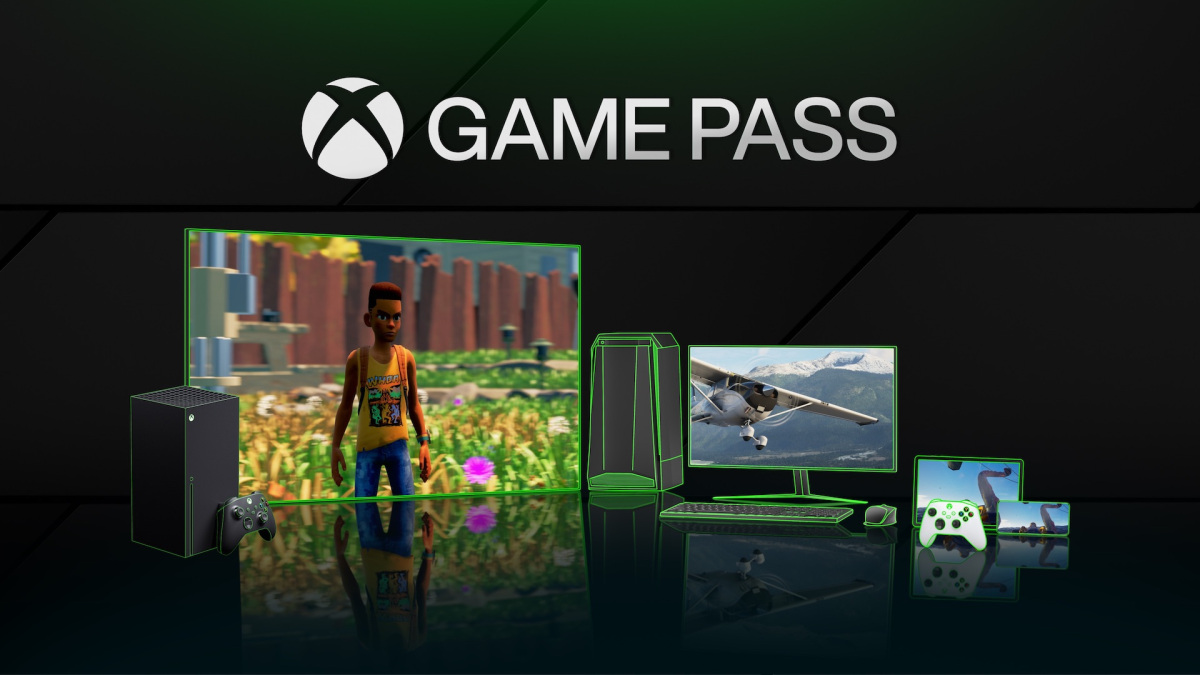
Another key Xbox service is Game Pass. First launched in the Xbox One era in 2017, it offers access to a library of games for a simple monthly subscription fee. It’s often referred to as a “Netflix-for-games” model, and it currently has more than 18 million paying subscribers.
Next: Xbox Game Pass buyer’s guide
There are actually two separate versions of Xbox Game Pass: One for Xbox consoles and one for PC. These have different libraries and require separate subscription fees (unless subscribed to Xbox Game Pass Ultimate). Both libraries are constantly shifting, although discounts are offered on games leaving Game Pass for those who want to continue playing.
Microsoft has pushed Xbox Game Pass heavily in the past few years, and a big part of that is day-one access to new first-party games from Xbox Game Studios. As the list of studios grows to include Bethesda, Rare, Mojang, and many others, the value of a Game Pass subscription also goes up. That makes it an attractive prospect for both casual and hardcore gamers alike.
Xbox Game Pass Ultimate
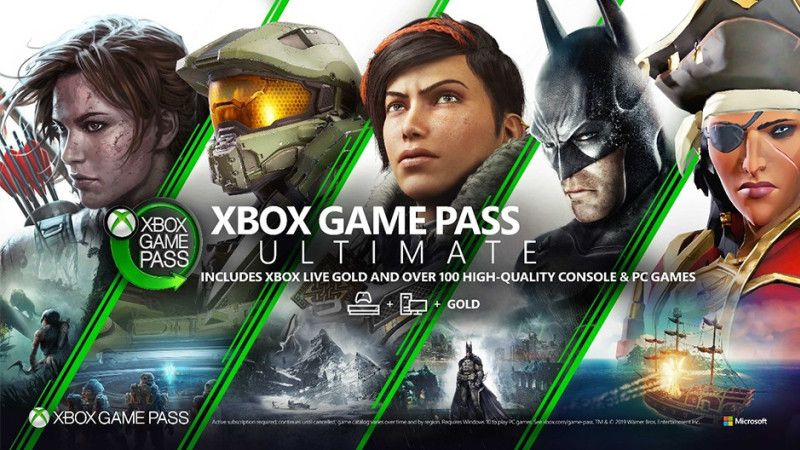
While Xbox Game Pass and Xbox Game Pass for PC offer great value, nothing compares to Xbox Game Pass Ultimate. As the name implies, it’s the ultimate subscription service for both console and PC gamers.
Xbox Game Pass Ultimate is the best deal in gaming.
Xbox Game Pass Ultimate includes both Xbox Game Pass and Xbox Game Pass for PC, Xbox Live Gold, Xbox Cloud Gaming, and EA Play. All of that costs just $14.99 a month, which is less than any two of those subscriptions purchased individually.
This premium subscription is a big part of Xbox’s strategy going forward, as evidenced by its bundling with an Xbox Series X or S with Xbox All Access. This special deal includes a console and two-year access to Game Pass Ultimate for either $24.99 or $34.99 a month, depending on whether you opt for the Series S or Series X.
Xbox controllers and accessories
Xbox controller design has remained fairly consistent since the first console, with only the very first controller (dubbed “The Duke”) standing as an outlier, with jellybean buttons and a thicker, heavier design. The subsequent “Controller S” defined the look of Xbox controllers for decades to come, with offset control sticks and round, evenly spaced face buttons labeled A, B, X, and Y.
Today, there are far more Xbox accessories available than just a second controller. Things like battery packs, external hard drives, and gaming headsets are available to take your Xbox gaming experience to the next level.
We have a full article for the best Xbox Series X and Series S accessories (and another for Xbox One accessories), but here is a brief list of what’s on offer
Xbox controllers
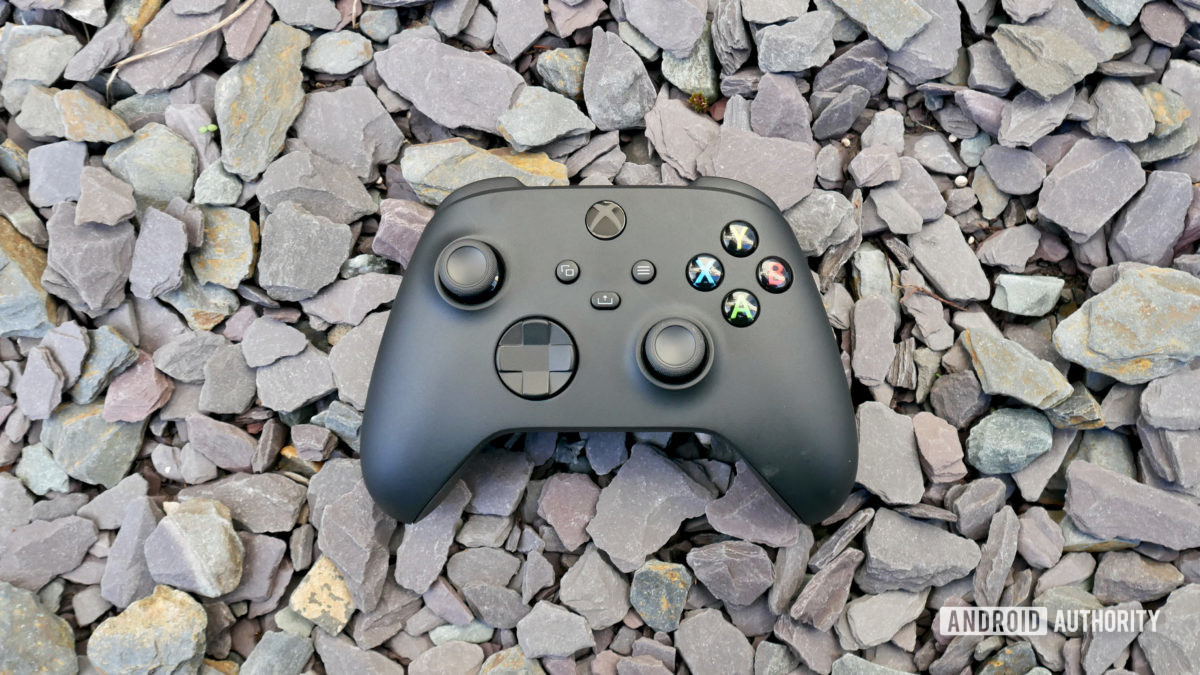
When it comes to official Xbox controllers, Microsoft sells two different models. The first is the standard controller, which comes in a wide variety of colors and costs roughly $60. It’s also a great Bluetooth controller, and even supports wireless play on PCs if you buy the right adapter.
If you want the very best controller, you’ll have to shell out a bit more for the Xbox Elite Controller Series 2. It truly allows you to customize your experience, with four additional paddles on the back, one macro button in the middle, and six swappable thumbsticks with adjustable tension settings. It even includes a carrying case and rechargeable battery pack, but you’ll have to part with nearly $160 for the privilege.
Read also: The best PC game controllers you can get
While we’re on the subject of controllers, there’s one more option you might want to consider if you’re an avid user of Xbox Cloud Gaming, and that’s the Razer Kishi Xbox Edition. It has all of the same buttons as a regular Xbox controller, but it clips onto your phone for Xbox gaming on the go.
The company also released the innovative Xbox Adaptive Controller for gamers with disabilities in 2018. This features two large buttons and a large D-pad, plus more than twenty ports that support a variety of input devices. This setup allows enormous customization of control schemes so virtually anyone can game, no matter how limited their mobility.
Xbox charging accessories
Unless you want to spend the rest of your days buying AA batteries, you’ll want to invest in a Plug and Charge controller battery pack. This nifty little pack replaces the backplate on your controller, and offers up to 30 hours of playtime on a single charge. It takes about four hours to fully charge via USB
If you’re worried about charging downtime cutting into your gaming, you can also swing for the PowerA Charging Stand. It comes with two battery packs and a handy stand to store two controllers. The battery pack won’t last quite as long, but it will make sure you always have at least one controller ready to go.
Other Xbox accessories

Games are getting larger and larger these days, and at some point, you will likely need to purchase some additional storage. If you have one of the latest Xbox Series X or Series S consoles, you have two major options.
The first is an official Seagate storage card, which slots into the memory expansion port on the back of each console. These maintain the incredible speed of next-gen onboard storage, which is truly a gamechanger when it comes to reducing load times. That said, they’re very expensive at well over $200 for 1TB of storage, and it’s likely to be a while before prices come down.
The cheaper option is a simple external HDD that connects to your console’s USB port. You won’t get the same great load speeds, but you can pick up 5TB of storage for a little over half the price of the option above. Just make sure you get an external hard drive that’s specifically designed for Xbox to ensure you can access a few bonus features.
Other Xbox accessories you might want to consider are a remote, which is much more comfortable to use than a controller for media, and a gaming headset. You’ve got plenty of options for the latter, but two of our favorites are the Steelseries Arctis 1 and Razer Kaira. Both will work with all of the consoles in your house, plus your phone.
First-party Xbox games and studios

Although Xbox isn’t able to boast the same incredible first-party catalog as its rival PlayStation, acquisitions over the years have beefed up its lineup. Now, first-party games from Xbox Game Studios (formerly Microsoft Studios) have even more significance since they’re all included in Xbox Game Pass.
In 2021, Xbox closed a deal to purchase ZeniMax and associated studios for over $7 billion dollars. That brought fan-favorite franchises like The Elder Scrolls, Fallout, Dishonored, and Doom beneath the Xbox banner.
Here’s a quick list of all first-party studios and their most important IPs:
- 343 Industries: Halo
- Alpha Dog Games: Primarily mobile titles
- Arkane Studios: Dishonored, Deathloop
- Bethesda Game Studios: The Elder Scrolls, Fallout, Starfield
- The Coalition: Gears of War
- Compulsion Games: Contrast, We Happy Few
- Double Fine Productions: Psychonauts, Brutal Legend, Broken Age
- id Software: Doom, Quake
- The Initiative: Perfect Dark
- inXile Entertainment: Wasteland, Bard’s Tale
- MachineGames: Wolfenstein, Indiana Jones
- Mojang Studios: Minecraft
- Ninja Theory: Kung Fu Chaos, Heavenly Sword, Devil May Cry, Hellblade: Senua’s Sacrifice
- Obsidian Entertainment: The Outer Worlds
- Playground Games: Forza Horizon, Fable
- Rare: Banjo-Kazooie, Conker, Kameo, Sea of Thieves
- Roundhouse Studios: New studio from Human Head Studios devs (Prey, The Quiet Man, Rune II)
- Tango Gameworks: The Evil Within, Ghostwire: Tokyo
- Turn 10 Studios: Forza Motorsport
- Undead Labs: State of Decay
- World’s Edge: Age of Empires
- Xbox Game Studios Publishing: Publishes games by external devs (Ori and the Blind Forest, Microsoft Flight Simulator, Zoo Tycoon)
- ZeniMax Online Studios: The Elder Scrolls Online
What makes Xbox unique?

For other game consoles like the Nintendo Switch and the Sony PlayStation 5, what makes them stand out from the crowd is a variety of exclusive titles. In the case of Xbox, there are some exclusive titles (as seen above), but the approach is much more inclusive.
Nearly all first-party Xbox games are available on both PC and console (not to mention the cloud), so gamers don’t need to purchase any expensive hardware to get the Xbox experience. Even the latest next-gen console games are available with ray-tracing support on the Xbox Series S for less than $300.
Xbox today is all about bringing its games to as many people as possible.
Another key element of the modern Xbox brand is Game Pass. This once again serves to make games more accessible by unlocking a massive catalog of games for a low monthly fee. With all first-party games included on day-one of their release, there is no better value deal for both dedicated and casual gamers.
Looking to the future, Xbox is in a unique spot to take the lead in the cloud gaming space with Xbox Cloud Gaming. Building off the popularity of Game Pass and the power of Microsoft’s cloud services, it can introduce millions of gamers around the globe to cloud gaming without having to explicitly pay for it.
Notable competitors
Xbox is well-positioned in an increasingly crowded and competitive gaming industry, but that doesn’t mean it can rest on its laurels. For now, it sits among the top three for console games, but with mobile and now cloud gaming on the rise, other brands may rise and fall to meet the shifting tides.
Here’s a quick roundup of some of Xbox’s biggest competitors now and in the future.
Sony
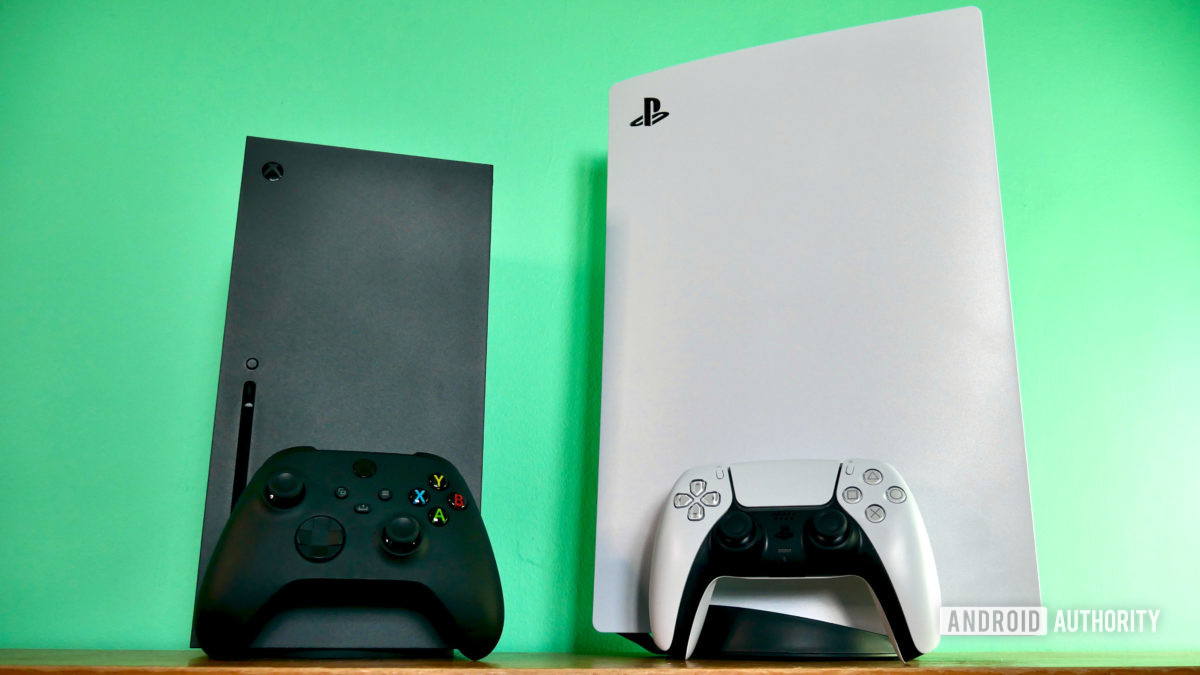
When most people think of console games, the two big names are Xbox and Sony PlayStation. Indeed, the Japanese giant has dominated the console scene for the past few decades. A strong lineup of exclusive titles and powerful hardware has earned PlayStation countless dedicated fans all around the globe.
That doesn’t look to be changing with the latest PlayStation 5, which is already outselling and outshining the Series X. Again though, Xbox has a headstart when it comes to services, as PlayStation Now is a far less attractive service than Game Pass. This may change as Sony looks to build out its IP into the mobile and PC space, but for now, Xbox has more reach outside of the console realm.
More: PS5 vs Xbox Series X
Still, PlayStation has a lot to offer beyond just first-party exclusives. Its consoles offer excellent VR support (which the Xbox Series X/S do not have), as well as an incredible new DualSense controller with adaptive triggers and immersive haptic feedback. For many pure console gamers, that puts PlayStation a head above Xbox when choosing new gaming hardware for the living room.
Nintendo
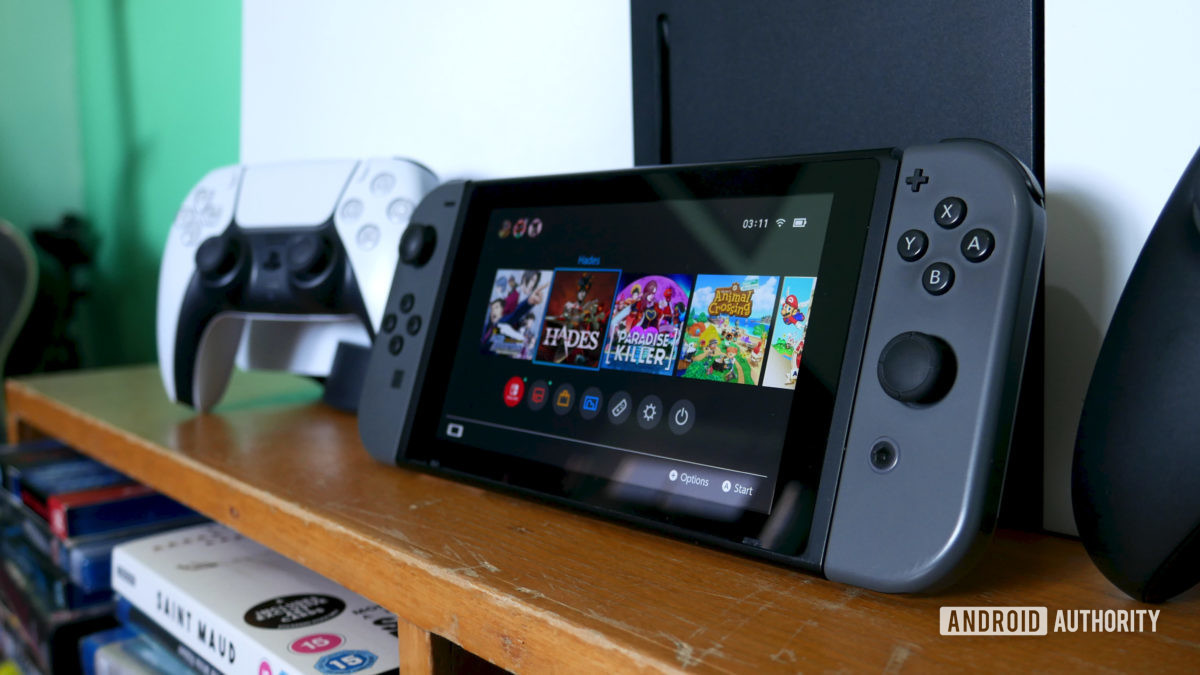
Nintendo has historically been the odd man out in the console gaming scene, with unique console designs and input schemes unlike even its own previous iterations. This means that each generation is fresh and exciting, although often backwards compatibility is woefully absent.
The biggest draw, regardless of the hardware, has always been Nintendo’s incredible library of first-party games. Iconic games from series like Mario Bros, The Legend of Zelda, Pokemon, Animal Crossing, Kirby, Fire Emblem, Super Smash Bros, and countless others are exclusively found on Nintendo consoles. This is enough to drive demand, despite historically weak graphical performance when compared to Xbox or Sony consoles.
Neither Xbox nor PlayStation can compete with Nintendo's first-party games.
The Japanese company’s latest console, the Nintendo Switch, is one of a kind in that it can serve as both a home console and a portable console by removing it from the included dock, hence the name. More than four years after it first hit the market, it’s selling better than ever and may prove to be Nintendo’s most popular console to date by the end of its run.
That said, it isn’t seen as an Xbox rival to the same extent as the Sony PlayStation is. As the Xbox brand expands into the cloud gaming space and beyond, this is unlikely to change. Nintendo will continue to do its thing by delivering excellent, but limited, gaming experiences for the whole family.

It might come as a surprise to find Google on the list of Xbox competitors, but it makes sense when you consider the wider goals of the brand. Xbox wants to be a household name in gaming in the same way that Google is a household name in search (and many other industries). It can also be seen as an offshoot of the rivalry between Google and Xbox’s parent company, Microsoft.
That said, the main overlap between the two is cloud gaming. Google was the first major player to enter the scene with Google Stadia back in 2019, and it remains one of the most (technically) proficient platforms, with low latency performance and excellent device support. Instead of relying on subscription services, players can buy a game and keep it forever, playing whenever they want from the cloud.
Google Stadia is the first major player in the cloud gaming arms race.
But while Google Stadia seems to have nailed the technical aspects, the rest has been somewhat of a disaster. A limited game library and poor communication about capabilities garnered poor press in its launch year. More recently, Google decided to close its first-party studio, further fanning the flames of critics claiming the service is headed for the infamous Google graveyard.
If Google does stick with it, it could prove to be a capable competitor to Xbox in the cloud gaming space. Google is one of the few companies with the infrastructure to take on Microsoft at scale, but it has a tough hill to climb to get there.
Amazon

Speaking of companies with impressive infrastructure around the globe, Amazon is positioning itself to become a major player in the cloud gaming space with Amazon Luna. First announced in September of 2020, it seeks to build on the success of Amazon Web Services and Twitch to take a chunk of the ever-growing global gaming industry.
The service is still in beta (and only for users in the US), but it creates a nice middle ground between Xbox’s Netflix-for-games and Stadia’s one-time payment systems. Much like Amazon Prime Video, it allows users to subscribe to “channels” from specific publishers to unlock a smaller library of games. Currently, the only channels available are the basic Luna Plus channel and Ubisoft Plus.
It’s still too early to know whether or not Amazon Luna will prove a winner, but Amazon is one of the few companies with the resources to make it work. Plus, if it ends up bundled with an Amazon Prime subscription, it would instantly put cloud gaming into the homes of tens of millions of families around the globe.
Best moments in Xbox history
The Xbox 360 catches on
Xbox has been in a perennial second or third place, but the brand really made some headway with its second major console release. The Xbox 360 didn’t exactly sell more than its fellow generation of consoles, but it does remain the best-selling console in Xbox history.
A big part of that was price. It launched a full $200 cheaper than the PS3, which was a tough upsell from the incredibly popular PS2 at the time.
Online gaming with Xbox Live
Online gaming was big in certain circles when Xbox Live launched in 2002, but on consoles it was in a fairly sorry state. Dreamcast Online and PlayStation Online suffered from poor server performance and a serious lack of basic features, meaning that online play was mostly relegated to PC gaming.
To combat this, Microsoft made Xbox Live a key feature of its first console, providing excellent server performance, a friends list, voice chat, built-in broadband support, downloadable content, and more. Once Halo 2 came out in 2004, the service had more than established itself as the premier platform for online multiplayer on consoles.
Release of the Xbox Adaptive Controller
When it comes to accessibility, gamers with reduced mobility are often left in the dust. Thankfully, Microsoft addressed this problem in 2018 with the Xbox adaptive controller.
With two large buttons and a host of features for customization, it opens a lot of doors for disabled gamers. It was named as one of Time’s Best Inventions of 2018 and remains one of the best accessibility controllers for any platform.
Launching Xbox Game Pass Ultimate
It’s no secret that Xbox Game Pass is set to play a huge role in Xbox’s business strategy going forward, but it’s also a huge boon for gamers. While most people are suffering from subscription fatigue, few are complaining about Game Pass. Everyone wanted a “Netflix for games” subscription, and that’s exactly what Xbox delivered.
The most expensive option, Xbox Game Pass Ultimate, is widely considered the best deal in gaming. It just has so many excellent titles to play through on console, PC, and the cloud, with new first-party titles joining the service on day one.
The commitment to backwards compatibility
Ever since the release of the Xbox 360, Xbox has been committed to maintaining backwards compatibility for all of its consoles. This is a huge benefit for legacy gamers and goes far beyond anything offered by its rivals.
Currently, the Xbox Series X and Series S are backwards compatible all the way back to the original console. Not every game is supported, but virtually all of the big hits from Xbox history can be enjoyed on a single console.
Worst moments in Xbox history
Xbox 360 Red Ring of Death
While the Xbox 360 was a high point for the brand, it wasn’t all sunshine and lollipops. Early consoles were plagued with technical problems, most notably the infamous Red Ring of Death (RRoD), riffing off Window’s Blue Screen of Death.
Mostly caused by consoles overheating, it led gamers to try all kinds of strange home remedies like wrapping their consoles in a cold towel. Ultimately, Xbox extended warranties to three years for early models, and spent a lot of cash repairing and replacing faulty consoles.
Xbox One price shock
Xbox struck gold with Xbox 360 pricing, but it struck out with the Xbox One. Crowds were shocked when Phil Specter announced the $500 price tag at E3, and to make matters worse, the PS4 was announced later that day for $100 less. It was a complete reversal of previous-gen pricing, and the Xbox One never really recovered.
The reason it was more expensive was the bundled Xbox Kinect, which almost deserves its own entry in the list of Xbox blunders. Later models would ditch the Kinect to achieve a more attractive price point.
Heavy-handed DRM on second-hand games
Pricing wasn’t the only controversy during the Xbox One era. When the console was first announced, Microsoft announced that it would require gamers to fully install games onto their hard drives (including disc-based games), and verify their purchase every 24 hours to play. This also meant the company would control whether or not you could sell your games or lend them to friends and family.
Thankfully, Xbox officials quickly walked these plans back after heavy backlash from fans. Gamers were free to share, lend, and sell their games at launch, and once a game was installed on a console it could be played without ever connecting to the internet again.
Xbox Live Gold price hike
Shortly after the release of the Xbox Series X/S, the company announced that its online component, Xbox Network (formerly Xbox Live), would double in price from $60 to $120 a year. Compared to online gaming on PCs, which has always been free of charge — plus the fact that even free-to-play games like Fortnite required a paid subscription — this struck fans as incredibly out of step with the times.
Like the DRM debacle above, Xbox backtracked on these plans as well. Xbox Live Gold remained the same price as always, and the company even dropped the paid subscription requirement for free-to-play games.
Other details
Although Xbox seems to have largely abandoned its aspirations to be a set-top box replacement, the brand does have one interesting device in the works that ties in with Xbox Cloud Gaming. Essentially a streaming stick that plugs into the back of any TV, it would allow access to game streaming without any further hardware (other than a controller).
Microsoft has confirmed that the device is coming soon, but hasn’t provided any details beyond that. We don’t know what it looks like, how much it will cost, or even whether it will launch alongside a standalone Xbox Cloud Gaming subscription (it’s currently tied to Xbox Game Pass Ultimate).
Another upcoming development is an Xbox TV app, which essentially does the same as the device above but for smart TVs. With just a compatible controller and a stable internet connection, users can stream Xbox games directly to their TVs. This would bring it up to device parity with the most accessible cloud streaming platform at the moment, Google Stadia.
Other FAQs
Q: Where can I buy an Xbox Series X/S?
A: Global availability is still limited, but you can learn more about the latest here.
Q: Can I use my Xbox controller with my PC?
A: Yes. Xbox controllers can connect to PCs via wireless or Bluetooth connections.
Q: What is Xbox Console Companion?
A: It’s the official name of the Xbox app on Windows 10.
Q: Who owns Xbox?
A: Xbox is owned by Microsoft.
Q: Can I stream Netflix, Disney Plus, etc. on my Xbox?
A: Yes. A wide variety of streaming apps are available on Xbox consoles.
Q: What is the difference between Xbox Series X and S?
A: The Series X is more powerful and has a disc drive. Learn about more differences here.
Q: When did the first Xbox come out?
A: The first Xbox came out on November 15, 2001 in North America, and in early 2002 in the rest of the world.
from Android Authority https://ift.tt/3s2InSF
https://ift.tt/3lLJxB1 by # TOPTACHNOTALK

No comments: